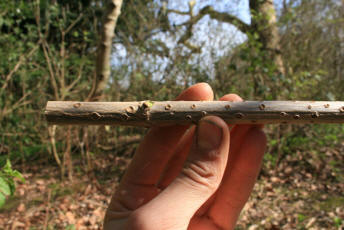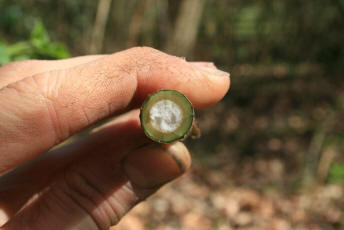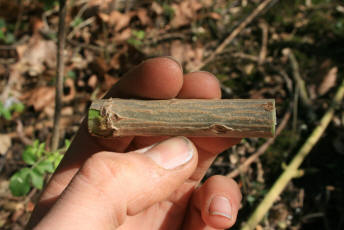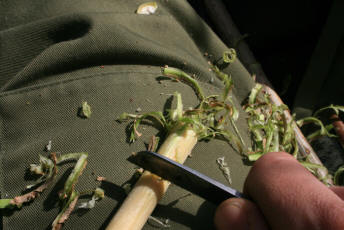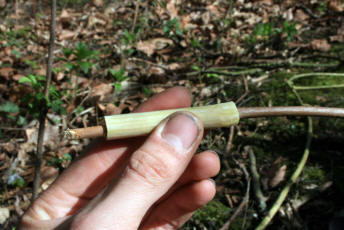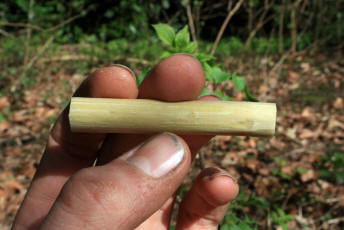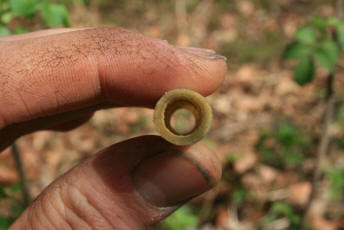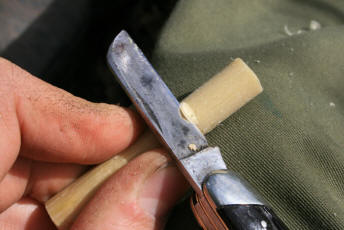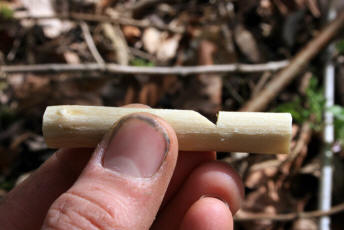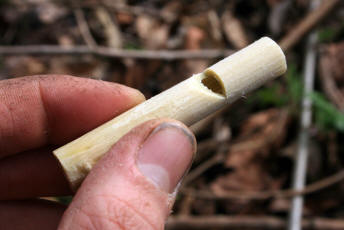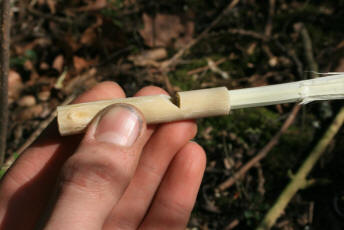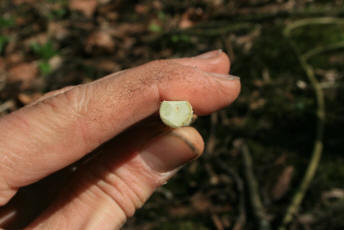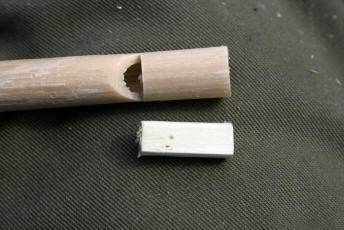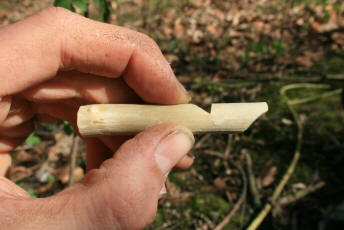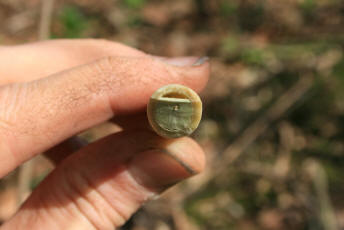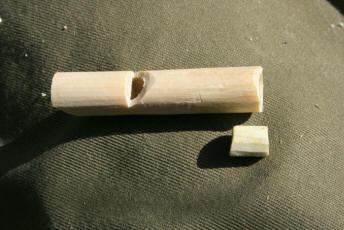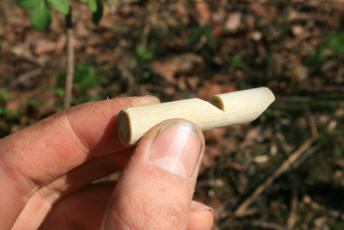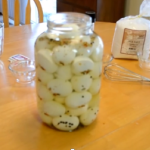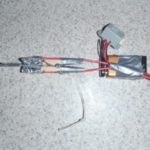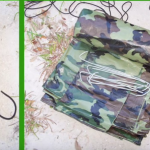In this article I have used freshly cut Elder wood which is still green, however It is best to use dry dead wood, otherwise the wood may shrink and cause the whistle to stop working. For best results pick a stem of suitable elder and leave to dry out before making the whistle.
We are taking advantage of elder wood because it has a very soft pith which can be easily removed to create a hollow tube.
For tree ID purposes I have taken these photos of some Elder. The picture on the left shows typical thinner branches and leaves whereas the picture on the right shows the thicker trunk of the tree. Elder usually grows only a few meters tall and tends to grow in poor quality soil.



